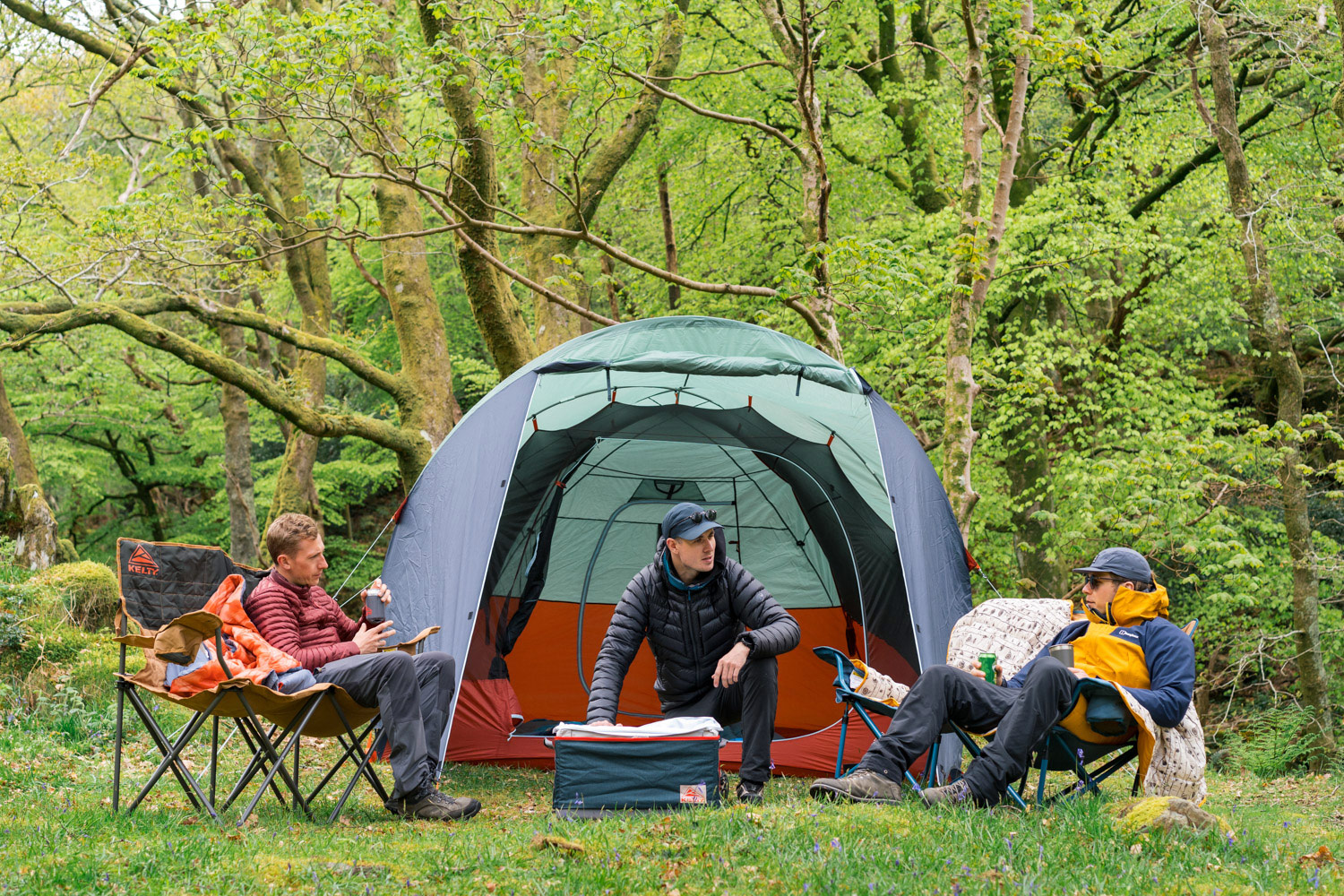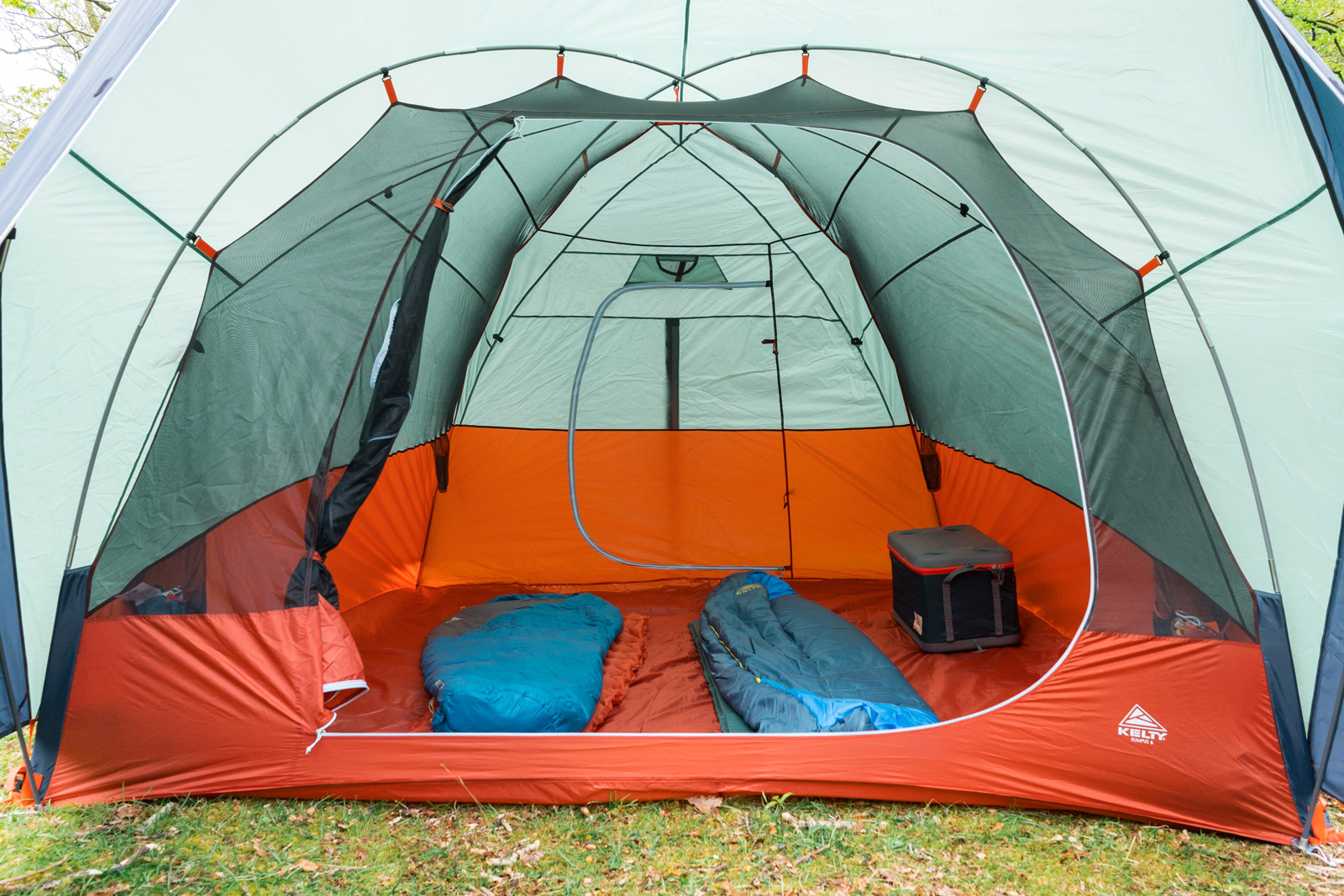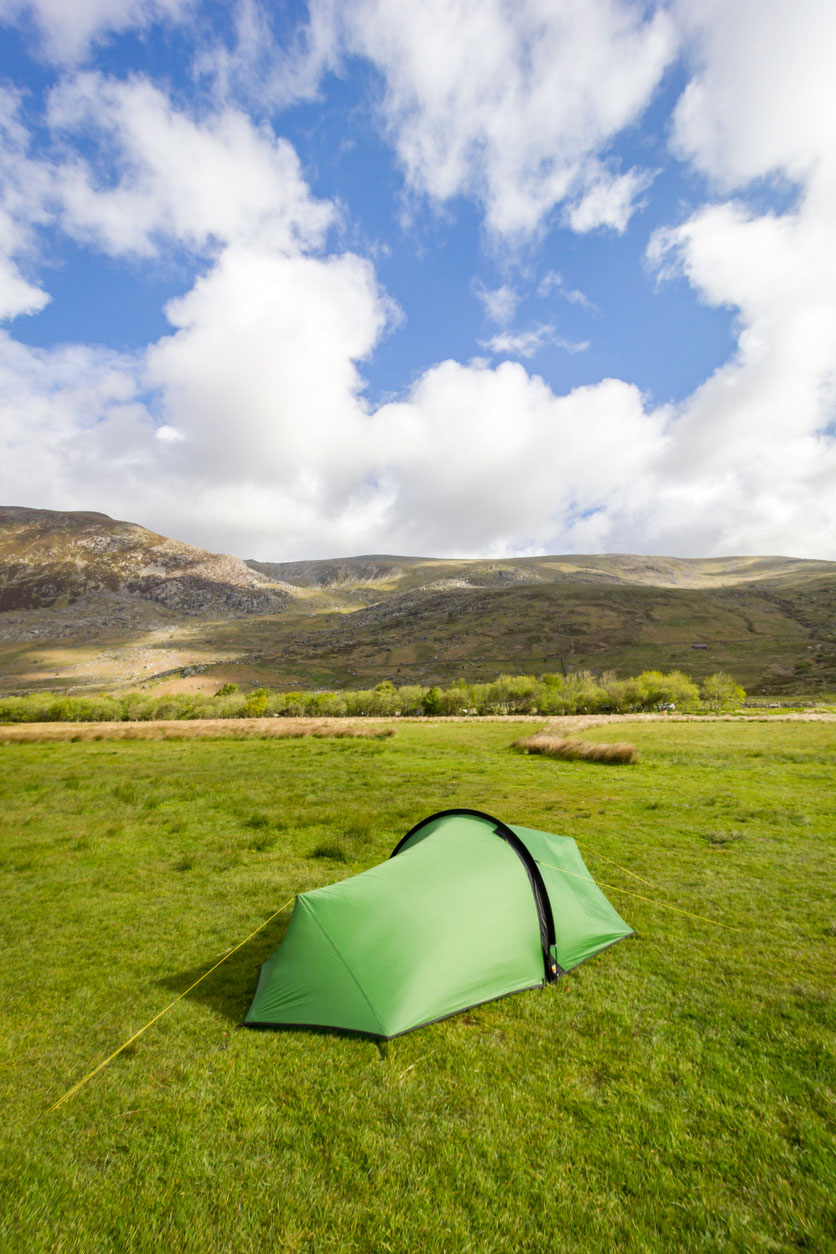Snowdonia National Park – or Eryri in Welsh – covers a total of 823 square miles; a richly varied landscape of craggy mountains, tumbling rivers, cascading falls, verdant valleys and pristine lakes. The park has so much to offer, and there is no better way to truly soak up this unique landscape than to pack a tent and pitch up in a quiet and secluded spot.
“There is no better way to truly soak up this unique landscape than to pack a tent and pitch up in a quiet and secluded spot”
When it comes to camping in Snowdonia, there are plenty of options. The first is to book into one of the region’s many campsites. We’ve selected some of our favourites, which are generally ‘low impact’ sites that steer well clear of hard standing and electric hook-ups designed for caravans and motorhomes in favour of a more tranquil and natural outdoor experience.

However, for those looking for a little more luxury, we’ve also highlighted a few ‘glamping’ options, which gives you the chance to experience a memorable and unusual stay in Snowdonia. You could spend the night in a cosy yurt or camping pod, for example, complete with wood-fired hot tub and fire pit.
Of course, if you want to be even more adventurous, you could go wild camping. If you’re new to this, it might be a daunting task to plan and prepare for your first night in the great outdoors. To help, we’ve highlighted some factors to consider, before highlighting some of our favourite areas of the national park. These offer great places to pitch up for the night and enjoy some mega mountain views.
Remember that wild camping in Snowdonia is not officially permitted without the landowner’s permission, although many people do wild camp within the national park without experiencing any issues. Basically, if you want to pitch your tent you need be comfortable with the fact that you are trespassing. If you do get asked to move on, respect the landowners’ rights and move off their land quickly.

Leave No Trace
As with any wild camp, it’s important to follow the principles of leave no trace. This basically means that when you break camp in the morning, no one should be able to tell you were ever there. The seven key principles of leave no trace are:
1) Plan ahead and prepare
Research suitable spots to pitch up before you head out, so that you can be reasonably certain your chosen site won’t already be busy. Arrive late and leave early. Pack the right kit and arm yourself with the skills and knowledge to ensure you’re prepared for poor weather, hazards and emergencies. Planning ahead also means considering factors like repackaging your food to ensure you don’t have loads of rubbish to carry out.
2) Travel and camp on durable surfaces
Don’t pitch your tent on sensitive or delicate flora, or camp in places where you’re likely to disturb habitats and wildlife. Choose a camping spot that isn’t already suffering from erosion or evidence of previous use. The idea is that once you’ve packed away your tent, you shouldn’t see anything that looks unnatural beyond a small patch of slightly flattened grass.
3) Dispose of waste properly
This one’s simple: pack it in, pack it out. In other words, if you brought it, take it with you. This includes all rubbish and food waste: banana skins, orange peel, the lot. If nature calls, take a trowel to dig a hole at least 15cm deep and more than 30m away from any water. Bury your poo and carry used toilet roll out with you in a sturdy ziplock bag. If washing yourself or your camping pots and pans, use a collapsible bucket to carry water 200 feet away from streams or lakes and use small amounts of biodegradable soap. This avoids polluting water sources.

4) Minimize campfire impacts
The easiest way to minimise campfire impacts is not to light one in the first place. Realistically, if you’re wild camping in the UK, you don’t need a campfire. The smoke will attract attention, and if you’re high in the mountains of Snowdonia, there isn’t going to be adequate fuel anyway. Instead, take a compact and lightweight backpacking stove to enjoy a hearty camp meal and a hot brew in the morning.
5) Leave what you find
As the old travel saying has it, ‘take only pictures, leave only footprints’. There’s no need to take that summit rock as a souvenir. Similarly, you don’t need to balance a load of pebbles on top of each other for the sake of an Instagram shot.
6) Respect wildlife
In the mountains of Snowdonia, you might spot ravens, falcons, hares and even some of the area’s resident population of mountain goats. Enjoy observing such wildlife, but don’t disturb them, feed them, follow them or disturb their habitats. Be particularly conscious of mating and nesting seasons.
7) Be considerate of other visitors
Respect other users of the national park. Remember that Snowdonia is not just a holiday destination, it’s also a living, working landscape. So, camp away from busy trails, don’t make lots of noise or play loud music, and take the smallest tent you can get away with, ideally in neutral tones. The idea is not to be seen by others and not to be a blight on the landscape.






